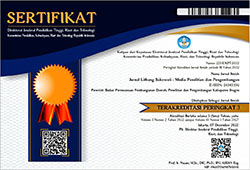Spline Semiparametric Regression Modeling on Percentage of Poor People in South Kalimantan Province
DOI:
https://doi.org/10.32630/sukowati.v8i1.444Keywords:
percentage of poor people, regression analysis, spline semiparametric regressionAbstract
Poverty is one of the unresolved development challenges throughout the world, including Indonesia. One of the regions in Indonesia where the percentage of poor people is below the national level is South Kalimantan Province. The percentage of poor people in South Kalimantan Province from 2000 to March 2022 was always below the national level. The economy in South Kalimantan is dominated by the mining and quarrying sector which is less sustainable, allowing the percentage of poor people in South Kalimantan to be prone to increase. Therefore, it is necessary to model the percentage of poor people based on the factors considered to influence it. This study aims to explain how to model the percentage of poor people based on the assumption that the observed variables affect it. To achieve this goal, the technique applied in modeling the percentage of poor people is spline semiparametric regression. As a result of using this semiparametric spline regression, it was found that the model parameters were not significant, requiring separate modeling for parametric and nonparametric regression. Based on the separation of the model, it’s found that using multiple linear regression there are 2 influential predictor variables, namely adjusted per capita expenditure and the percentage of households using proper water.
Downloads
Published
How to Cite
Issue
Section
License
Copyright (c) 2024 Muhammad Munawwir

This work is licensed under a Creative Commons Attribution 4.0 International License.


















